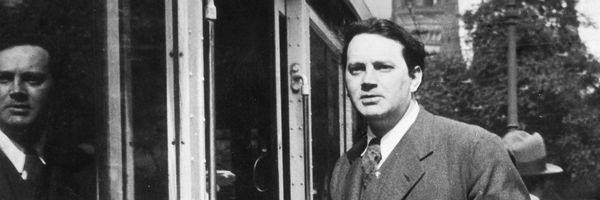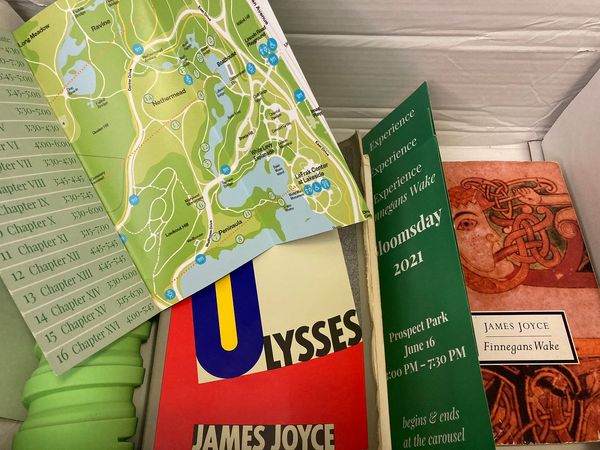Week 7: A Novelistic Alternative

Last week, I discussed within generative poetry two examples of nature writing which move away from an individual human perspective, providing instead some form of machine voice or engagement with weather data. Elsewhere, some writing strives to be deeply and outwardly personal. The introduction to the Norton Anthology of Modern & Contemporary Poetry says this about contemporary poetry:
At the center, attacked by both literary conservatives and radicals, is the dominant mode in MFA programs, anthologies, publishing houses, national awards, and magazines such as American Poetry Review: a modified form of confessional free verse, sometimes called “postconfessional” or “neoconfessional,” though in an age of relentless confession on radio, television, and the Internet, the personal revelations tend to be less shocking to today’s readers than those of the first-wave confessionals and Beats were to their early audiences.
More recently, in keeping with the comments on wider media saturation, we can see this in highly popular instances of Instagram poetry.
In the world of novels, we have the popularity of "autofiction," works which draw heavily on autobiography but present the story within the structures of conventional fiction writing, often with the author lending his or her name to the central character to explicitly draw attention to the tensions between autobiography and fiction. In Thomas Wolfe's address to the reader at the front of first novel, Look Homeward, Angel (not a work of autofiction, but with clear autobiographical traces), he writes,
If the writer has used the clay of life to make his book, he has only used what all men must, what none can keep from using. Fiction is not fact, but fiction is fact selected and understood, fiction is fact arranged and charged with purpose. Dr. Johnson remarked that a man would turn over half a library to make a single book: in the same way, a novelist may turn over half the people in a town to make a single figure in his novel.
In drawing more closely to such real experiences, autofiction can give an extensive look at its central character. Charles Finch writes in "What Tweets and Emojis Did to the Novel" that reading such works "was less to enter a story than to spend a while as another person." Finch is contrasting novel reading (particularly long, multivolume novel reading) with online feeds. Instead of hyperconnectivity, these novels offer "unmediated access, over many pages, to precisely one other consciousness." Finch is thinking in particular of Elena Ferrante and Karl Ove Knausgård, whose pseudo-contemporary status (to return to Toby Litt's phrase) Finch is celebrating as displaying how our computer systems have not yet consumed our individual selves in anything near the depths these writers demonstrate.
With autofictional works, biographical study can attempt to attempt to detail what is auto- and what -fiction. Now, though, the more philosophical questions about the distinction remain, but the more our lives get documented online, the more one's ability to repurpose those details as fiction is compromised. This is explored in different ways in Tao Lin's Taipei (June 2013) and Megan Boyle's Liveblog (2018, but collecting writing spanning March to September 2013). Going back two years earlier, the two released together the film Mumblecore, documenting parts of their relationship and filmed entirely on a laptop they carried around. The events depicted in the footage shared as Mumblecore became the basic plot of Taipei, while Liveblog is an actual online liveblog, originally on Tumblr and then published as a print book by Tyrant Books, with a cover declaring, "a novel."
Much of the core differences between Taipei and Mumblecore can be expected from the formal difference. The text is full of interior thoughts not captured by a casual webcam video. The text includes private moments outside the scope of filming. Further, the first third of the text precedes the relationship captured in the film. One thing which you can capture (perhaps agonizingly) in video which they do not, but which Lin does in Taipei, is the timing of asynchronous communication. Specific times messages were sent, or the times in between messages, in seconds or minutes, appear frequently. Such information is weighed against new forms of etiquette as well as personal anxieties, and so communicates just as much as the messages themselves.
One way in which Taipei thrives is that, as Lin characterizes his central character, Paul, he struggled socially as a child and then was enabled by technology to become hyper-social. The cell phone and laptop then become governing forces in social relations, contributing to a sense of alienation. Characters will sometimes text while in the same room, a decision sometimes made mutually and strategically. Paul has grown to understand himself and his life deeply within this digital medium, frequently thinking of himself as a dot on a map, his memories as a .zip file, his experiences something to click on, and so on. Accordingly, his life can easily be abstracted into text, in a self-reflective way not readily captured by his webcam.
This process of abstracting life through writing is something which Lin / Paul already experiences through Twitter. At one point, Paul "focused on steadily eating while repeatedly thinking ‘eating chips and guacamole.’ He looked at his hands, and felt vaguely confused. Was he instructing his brain? Or was he narrating what he saw and felt?" The concise thought emerges in the style of a microblogging tweet, the kind Lin wrote frequently, and partially collected in 2015 through Hobart as Selected Tweets, published jointly with Mira Gonzalez. One tweet collected from Lin's account there is simply "Eating a giant pile of rice," from August 2013, shortly after the release of Taipei. In grappling with how we craft fictional narratives out of our lives when our lives are (for some, for now) widely recorded and published online, Lin is also conscious of the shortcomings of many of those records. The real tweet emerges out of a cultural context and a platform-based style, but Lin has Paul actively confused as he finds himself thinking in these terms, looking down at the hands with which he might be tempted to type the thought.
Liveblog goes in the opposite direction, but is also working in a different online context. Unlike the microblogging style of liveblogging on Twitter, Boyle's writing on Tumblr is expansive. Spanning five months and a few shorter entries over a couple additional weeks as the project wraps up, the text spans 702 pages. Like Lin detailing the timelines of his asynchronous communications, Liveblog places events carefully in time and would suffer from translating the details and events of the blog into a traditional narrative. Entries are dated and broken up with timestamps, with some other characters reading the blog as it goes live at those times, and then interacting with Megan as recorded in later entries. The work is a detailed account of her life at this time, giving a real case study as well of what it looks like to live with one's constant actions and thoughts presented for online inspection. Because she is writing in unbounded longer units, she is able to detail extensively the self-reflective attitude of Paul as she goes along, always giving the more immediate impression rather than trying to recreate thought processes through much later fictionalization.
Megan, like Paul, finds herself thinking of the world in computerized terms. Already in the opening March 17 section, she records being in a store at 7:33 PM, and writes, "Thought I saw a 'new message' alert flash on kombucha bottle and panicked." Then, at 8:41 PM: "stared at a square of yellow cheese complexly, like i was downloading a message from it." These thoughts reflect expectations of finding currently non-connected items to be part of her larger hyperconnected world. The next day, she writes, "i have a relationship with this liveblog now," and so continues on through hundreds of pages chronicling passing thoughts like the above, and then her thoughts on those thoughts, and writing them and having them read, and so on. In having a relationship with the blog, the writing serves as a mediator to an unknown (and potentially growing in the future) web of readers.
Through this all, Megan struggles through a commitment toward openness and sincerity, not wanting to leave out thoughts or events from the blog once she considers them worth recording. The process is always understood as partly hostile toward herself. Later on March 18, she writes, "REMINDER OF MY GOAL: TO LIVEBLOG DAILY ACTIVITIES WITHOUT PRIVACY AS A FORM OF NEGATIVE REINFORCEMENT, TO 'ACT BETTER'." The next day, she writes,
1:17PM: i want everyone to be doing this too, liveblogging all the time, a future where no one talks and. damnit. i used to picture this bleak all-white 'matrix'-like people-harvesting room. the entire earth had changed into this white room where everyone just sat silently, and that was the future. thought 'maybe that would be good if everyone was liveblogging' and i guess worse things could happen than that, but i'm definitely not as excited about it anymore.
Boyle gives us a lengthy glimpse into one instance of what that world would look like, it being in some ways just a mild extension of the extensive accumulation of personal data occurring now. Unlike Boyle's intentional project, some of that data is generated passively, without our knowing, and not in our own words, but does nevertheless give a picture of us. As Megan undergoes evaluation to be a tenant in an apartment, one's public image is clearly important, but so is one's self-image and health. Liveblog is also, in part, an account of a period of heavy drug use, which Boyle then quit. As reflected in the all-caps quote above, Megan felt the need to directly address this, and found it useful to do so, but also in the process presents an ominous picture of the future when more and more experience will be permanently archived, whether recorded through text, video, biometrics, or other means.
Confession and autobiographical writing are not new, but this context in which such personal details are immediately spread across global networks is new. Taipei and Liveblog each offer an approach toward narrative in a context of thorough digital records and hypercommunication. Next week, we will look at another novel, Joshua Cohen's Book of Numbers, in which a writer named Joshua Cohen ghostwrites for a tech billionaire named Joshua Cohen, a metafictional approach distinct from what is described above.
This post is part of a 10-week series on "Literature & Hyperconnectivity." To follow along with the remaining weeks via email, to get details on associated live discussions (such as with Tim Maughan and Karen An-hwei Lee on September 5), and more, consider signing up below:





